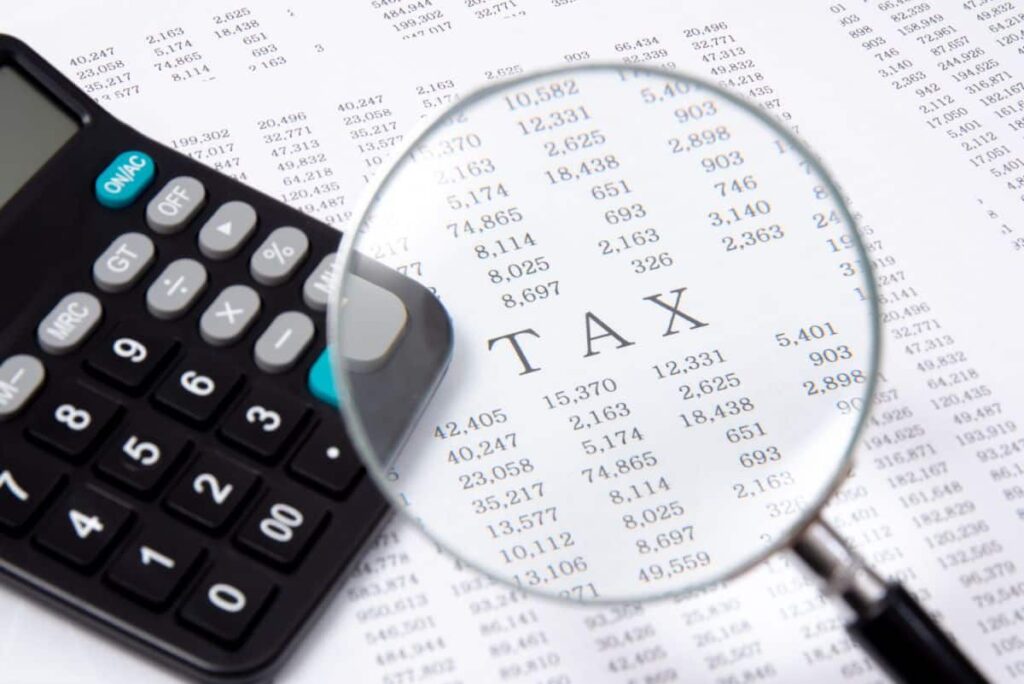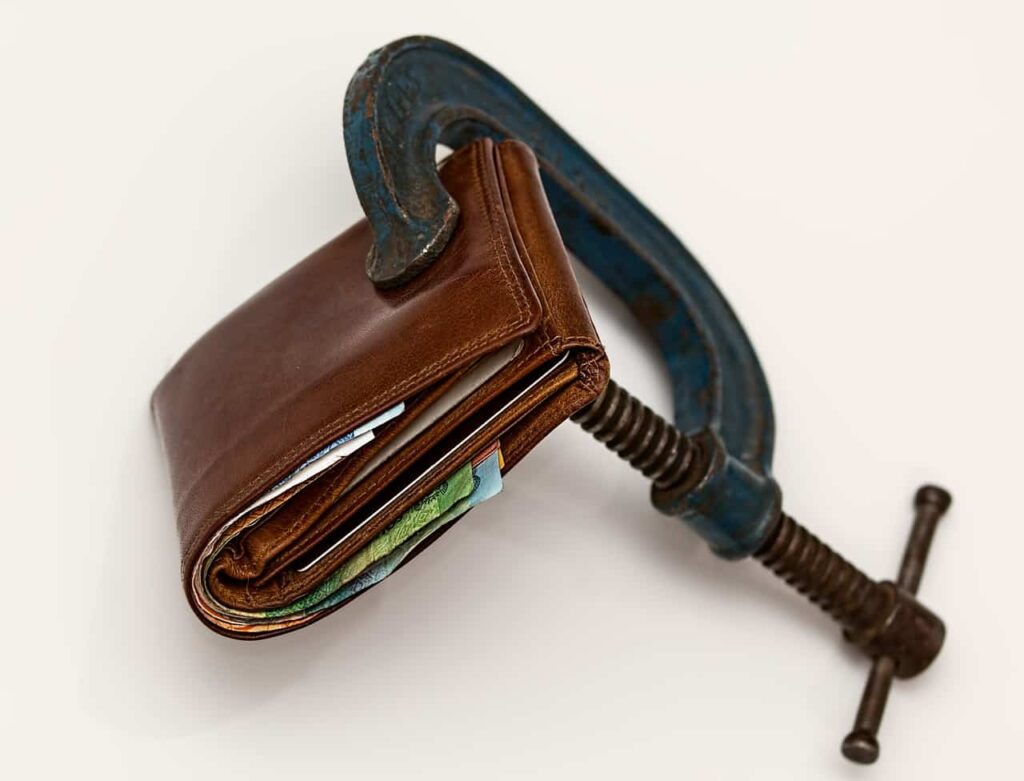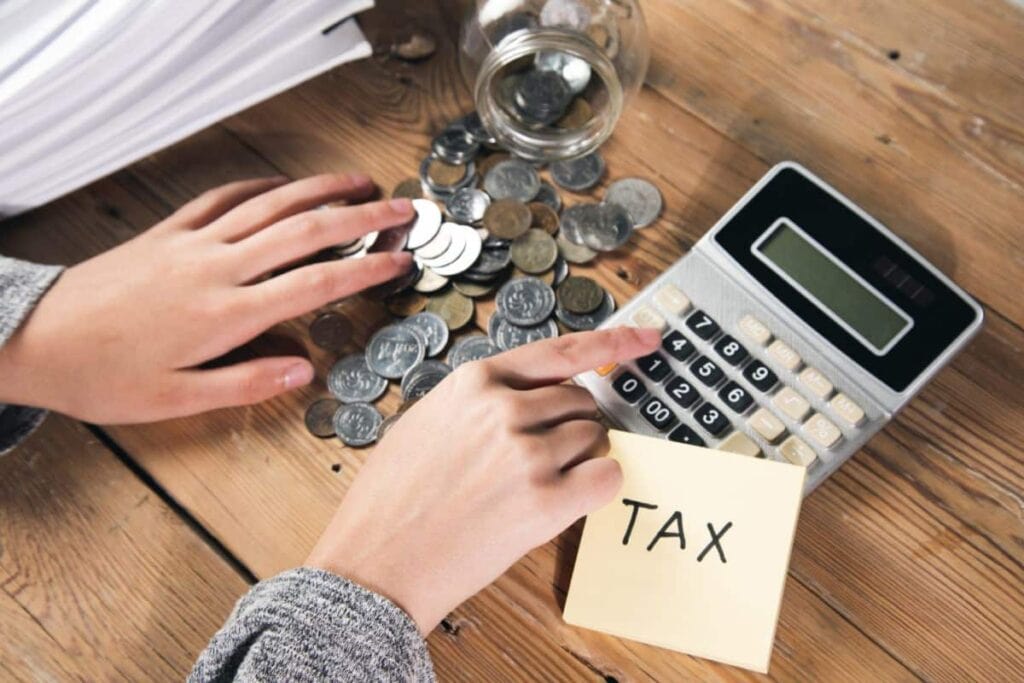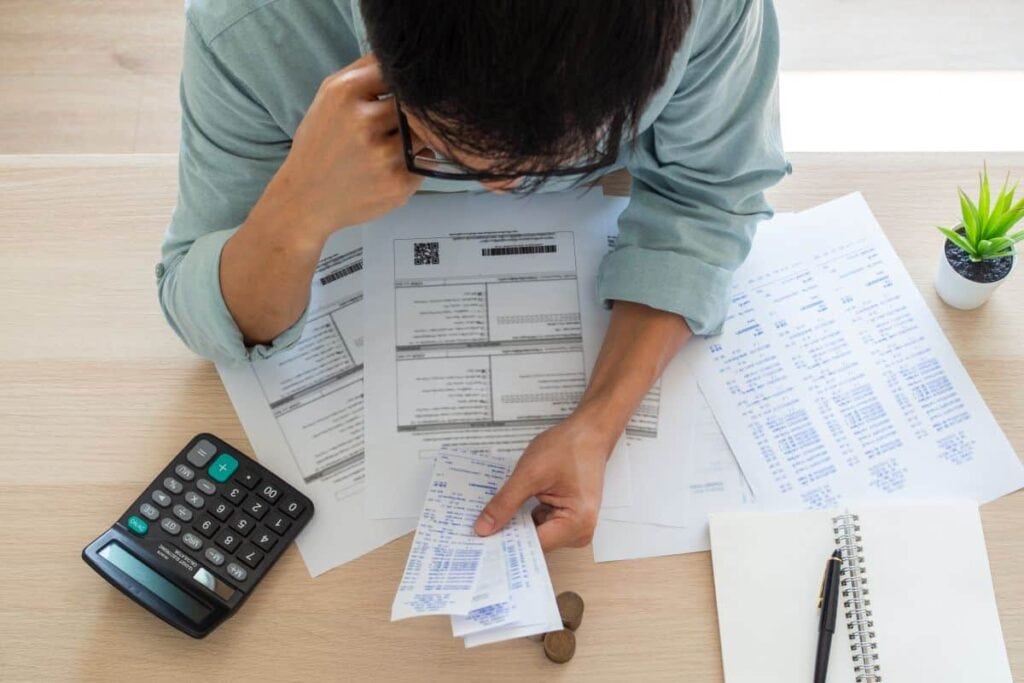Are you trying to find strategies to reduce the amount of taxes you pay on the investment property you own? If this is the case, you are in luck! This blog post will provide you with some advice that you can use to assist you in doing exactly that. So, without further ado, let's get the ball rolling here, shall we?
Trying to reduce the amount of tax you pay on your investment property can be a challenging endeavour. To assist investors in lowering the amount of their income that is subject to taxation, the government of Australia provides a number of concessions and tax breaks; however, it can be difficult to determine which ones an individual is qualified to receive.
This article on my blog provides an overview of the primary tax benefits that are available to owners of investment property, as well as some suggestions on how to claim those benefits. Continue reading this article if you want to reduce the amount of money you spend on taxes and increase the amount of money you get back from investments.
Advice on How to Reduce the Tax Impact of Your Investment Property
The potential to reduce the amount of tax you owe is one of the many benefits associated with the acquisition and ownership of investment real estate. Because you can deduct part of the expenses and some depreciation from the revenue from the rental property, your overall tax burden is lower than it would have been if you had earned the same amount of money from any other source.
Building depreciation should be claimed.
It never ceases to amaze how few individuals actually take advantage of the opportunity to claim building depreciation on their property.
Depreciation that can be claimed on the structure of the building itself is referred to as "building depreciation." That looks like it could be a house. And the basis for this claim is the expenditures incurred throughout the building process. For the majority of properties, you are eligible to deduct 2,5 percent of the total building costs over a period of forty years.
How can we determine how much the building will cost? Having a quantity surveyor come in and create a depreciation schedule for you, including both the building itself as well as the plant and equipment, is the most effective approach to obtain this information.
A quantity surveyor is the type of professional that can provide you with an exact calculation so that you can make the most of your claim.
Claim Initial Repairs As Capital Works
According to Raftery, one of the most frequent errors that investors do is to try and deduct the cost of early repairs or capital improvements as an immediate expense.
"Initial repairs to address damage, faults, or degradation that occurred at the time of purchasing a property are generally deemed to be of a capital character and are not deductible," he added. "This is the case even if the repairs were made to make the property acceptable for rental."
Claiming capital works deductions on these repairs and enhancements over a period of forty years would be a more effective strategy than the alternative.
Claim Plant And Equipment Depreciation
Depreciation of assets that are located on your land is referred to as "plant and equipment depreciation."
This covers things such as carpet, floors, drapes, light fittings, and other fixtures, among other things. These are the types of objects that, over time, will wear out and become obsolete, necessitating their eventual replacement or improvement.
Because depreciation of plant and equipment is so difficult to understand, I decided to write a blog post that was comprehensive and extensive in its coverage of the topic.
You have the option to once more pay a quantity surveyor to complete this task on your behalf. They have knowledge of the tax regulations and are aware of the rates at which particular assets can be depreciated. There are two distinct approaches to depreciating assets, and either one of them can handle everything on your behalf.
There are some quantity surveyors who will actually promise that the amount of money you will save in taxes as a result of using their report will be larger than the amount it will cost you to use their report. Therefore, it's something that's worth taking a look at.
Pay the Interest in Advance
If you have a fixed-rate loan and an annual income that is on the verge of creeping into the next tax bracket, it is often worthwhile to pre-pay your interest for the next 12 months. This will allow you to claim the deduction in the income year in which you are lodging your tax return. If you have a variable-rate loan, it is often not worthwhile to pre-pay your interest.
This method can also be utilized in the process of paying for several other services. In addition, certain service providers may present you with a price reduction for doing so.
Maintain a record of all of your expenditures
The fact that many individuals fail to maintain their receipts and fail to recall having made any purchases linked to their property is one of the factors that prevent them from realizing the most possible tax savings on their real estate.
If you're making purchases for your investment property and those purchases pertain to that property, which generates revenue for you, be sure to keep track of all of your spending.
Always keep your receipts, and at the end of the year, present them to your accountant for review. He will be able to inform you which ones you are able to claim, as well as those that you are unable to claim.
Keep a record of the money you spend on trips to the property
Let's imagine you now make your home in New South Wales, but you have a property investment in Queensland. You are permitted, according to the rules, to go to that property, conduct an inspection, and then submit a claim for the costs connected with doing so.
That may include the cost of the journey there, the flight back, plus lodging for one night at the destination.
A holiday is something that a lot of people tack on to the end of this. You need to be cautious about it because the only expenses you can deduct are those that are directly associated with the property. It is not possible to have a vacation of ten days and then write off the entire trip as a property expenditure.
However, there is a possibility that you will be able to receive reimbursement for your own transportation to and from the location as well as the cost of one night's lodging.
Regarding this matter, I strongly advise you to discuss it with a qualified tax accountant. They will assist you in maximizing your returns and gaining the maximum benefit possible from your expenditures without going too far or breaching the law. They will do this for you.
For commercial real estate investments, a knowledgeable property advisor is indispensable.
Get A Scrapping Schedule Done
If you are planning on making any major renovations or replacing anything substantial, you might consider hiring a quantity surveyor to create a scrapping timetable for you. You will essentially be able to determine how much of the item's value is still intact thanks to the quantity surveyor, and you can subsequently claim that amount as depreciation.
Let's imagine you're in the process of removing the carpets. They set you back $2,000 when you initially invested in them, but their current value is $400, or you still have $400 in unclaimed funds from when you initially invested in them.
You can write off that $400 because you are purchasing new ones to replace them, and you can also deduct the same amount from your taxes. Obviously, that serves as an illustration. You shouldn't make use of that in your everyday life. Hire a seasoned expert to do the job for you.
Maintain accurate and up-to-date records of all of your spending
Taking advantage of tax deductions is by far the simplest strategy to reduce the tax burden caused by the investment property you own. In order to accomplish this, you will need to carefully maintain a record of all of your receipts and bank records.
You are required to keep records of, according to the ATO:
- The date and amount that you purchased your property (so that you may determine whether or not you will have a gain or loss on the sale of it when the time comes);
- You are required to include in your annual tax return any rent or revenue related to rent that you received;
- You need to provide the date of the spending, the amount of the expense, the nature of the products or services purchased, and the name of the supplier for any expenses for which you want to claim deductions;
- You could organize these documents in a variety of different ways, such as by keeping physical statements in a binder, by manually filing them in a folder in your computer, by using applications like Expensify that keep track of your expenses, and the list could go on and on. There are countless different ways that you could organize these documents.
A property manager is another resource that may be helpful. One of the many benefits that technology has brought to the field of property management is the simplification of the process of filing taxes.
Make sure you are familiar with the distinctions between capital works, repairs, and maintenance

Do you believe that you may claim all of the costs associated with repairs and upkeep as the same type of deductions for your investment property? Think again!
The ATO distinguishes between several types of work, such as repairs, maintenance, and capital works. If you want to pay less tax on your investment property, you will need to ensure that you classify these expenses in the appropriate manner on your tax return in order to guarantee that your deductions are submitted in an acceptable manner.
- It is called a repair when you replace something that has become worn out, damaged, or broken as a result of the actions of your tenants.
- Maintenance refers to the work that you do to either stop something from getting worse or to fix something that has gotten worse after you started renting out your investment property.
Capital work is when you replace a complete structure that has been partially destroyed (like all of the fences on your property), or when you add a new structure (like a carport) to an existing property. Examples of this include replacing all of the fencings on your land.
Make a claim for your capital assets and your borrowing costs
You may also qualify for tax deductions for the interest and principal payments you pay on any loans used to purchase an investment property. However, the size of the expense will determine whether or not you are eligible to claim the entire expense as a tax deduction on your rental property in the same year it was incurred.
Capital Items
Items with a worth of more than $300, including washing machines and refrigerators, are considered capital and must be claimed over time.
You are able to deduct the total cost of these assets throughout the course of their anticipated lifespan. In addition, certain things are subject to unique restrictions that, if followed, might expedite the process of claiming tax deductions. The Australian Taxation Office (ATO) has compiled a document that explains in great depth the guidelines for claiming tax deductions for capital assets as well as how to calculate the assets' effective lives.
Expenses related to purchasing capital items with a cost that is less than $300 can be deducted straight away in the same financial year that they were purchased. You should be aware, however, that if the item is part of a set of items (for instance, you bought one dining chair for $250 as part of a set of 4 dining chairs), then you cannot claim the full deduction right away because the total value of the set of items is greater than $300.
Borrowing Expenses
Borrowing expenses are any expenses that are linked with obtaining a loan for your investment property and can be deducted from the tax liability associated with your investment property. The following are some examples of this:
- costs associated with establishing a loan;
- insurance that is taken out by the lender but is billed to the borrower as the lender's mortgage insurance;
- mortgages are subject to a stamp duty fee;
- fees assessed by your lender for doing a title search;
- Costs associated with the preparation and filing of mortgage documents (including fees for solicitors);
- mortgage broker fees;
- costs associated with obtaining a value that is necessary for loan approval.
If the total of these costs is less than one hundred dollars, you are eligible to claim them in their entirety for the current tax year. In the event that this is not the case, you have the option of dividing this deduction across the remaining years of your loan (whatever period is shorter).
This worked example, which was provided by the ATO, demonstrates how tax deductions for borrowing expenses are calculated. It may be helpful for you to utilize this example in order to calculate the tax break that applies to your portfolio.
Keep an eye on your schedule for depreciation and capital works
A depreciation schedule is a record of the property's capital assets that have a value that is greater than $300, and it shows how much you are eligible to claim in depreciation each year. It's a fantastic strategy for lowering the amount of tax you have to pay on your rental property.
Because you may anticipate that many of your capital goods, such as washing machines, carpets, and so on, would depreciate over the course of time, you will be able to claim deductions over the period of their useful lives.
In a similar vein, you may be eligible to take deductions for capital works over a period of years for certain building expenses. This means that you may be able to claim a tax deduction for any labour that you put into the construction of your investment property.
A valuable record of all the construction and building-related work that has been completed on your investment property is a capital works schedule.
It includes the following:
- Expenses associated with the planning stage, such as fees for surveying, architects, and engineers;
- The fees associated with obtaining building permits;
- The price of the building and the materials used in construction;
- the expense associated with modifying or expanding a building;
- the cost of making capital improvements to the properties that are adjacent or making structural changes to the property that is already there.
This schedule is also essential for estimating the amount of annual tax deductions that you are eligible to claim for your investment property. In most cases, you have the ability to make claims for tax deductions related to capital works for up to forty years after the work has been completed. Your property must fulfil both of the following requirements in order for you to be qualified for this tax reduction offered by the ATO:
- Be constructed after the month of July 1985;
- Is now being rented out, or it is truly available to be rented.
The ATO also provides a helpful tool that you may use to compute your capital allowance and depreciation for your assets.
Your property tax expert will also be able to provide you with more in-depth explanations and assistance in calculating how much you are eligible to deduct from your taxable income and over what period of time.
It is essential that you are aware of the fact that the ATO considers only quantity surveyors to be appropriately competent to supply the schedule if you are unable to accurately calculate the building expenses associated with your property. That implies that even while your accountant can assist you in maintaining an accurate timeline, they are unable to provide you with a cost estimate for the building project.
If you held a rental property or entered into a contract for a rental property before 7:30 pm on May 9, 2017, you are eligible to claim deductions for the value loss of any depreciating assets that were contained within the property prior to that date.

If you purchased it after this date, you are only eligible to claim depreciation on brand-new assets or if the property was recently built or substantially remodelled and no one had previously claimed any depreciation deductions on the asset.
Your depreciation deductions can be calculated on your own, but Raftery recommends that you hire a quantity surveyor to produce a depreciation schedule on your behalf because of the complexity of the ATO's requirements on property depreciation. You can calculate your depreciation deductions on your own.
Because deductions can be in the thousands of dollars each year, he stated that you should be able to get your money back from them when you file your first tax return.
Make a Request for a Change in the PAYG Withholding Amount
Raftery recommends submitting an application for PAYG withholding variation if you have been having trouble with cash flow over the past year and have a property that is negatively geared.
This technique allows you to collect your tax breaks every time you are given your salary, rather than as a lump amount at the end of the financial year, and it is often employed by those who claim bigger than typical deductions. If you follow this strategy, you can reduce your overall tax liability.
You are required to submit an annual request to the ATO for a PAYG withholding adjustment. You have the option of submitting the application on your own or asking an accountant to handle it for you.
Your Investment Property Should Have a Negative Gearing Ratio
A property is said to have a negative gearing ratio if the annual interest payments and expenses on the property are more than the annual rental income from the property. You could be questioning if this is a negative thing or not. Certainly not in every case.
In point of fact, this is among the most effective means by which you can lessen the impact of income tax on your rental property.
It also comes with a number of important tax advantages. As a direct consequence of this, sixty percent of investment homes in Australia are classified as having negative gearing.
Negative gearing your investment property does not qualify you for any direct tax deductions; nevertheless, it does allow you to reduce the amount of income that is subject to taxation, which in turn reduces the amount of tax that you are required to pay.
This means that you will be able to deduct the loss from the amount of income that you are subject to taxon.
Keeping this investment strategy in mind is something you can do if you want to reduce the amount of tax that you have to pay on the investment property that you own.
Remember that using a negative gearing strategy with your investment property does come with some dangers. Therefore, before you go ahead with this choice, make sure that you read our essay on the concept of negative gearing.
Employ a Property Manager If You Can.
You are now aware of the costs associated with investment properties that qualify for a tax deduction; however, how exactly can a property manager assist you?
A good property management system will help you organize all of your costs in one location for easy access. At the conclusion of each fiscal year, you will have a much lower chance of needing to go on a statement hunt through email after email or through the mounds of documents that are in your home if you do things this way.
It is highly recommended that you ask your property manager to organize and pay any contractors, rates, and other charges on your behalf for tax purposes. This will allow you to make the most of the services that your property management provides.
On top of that, the expenses associated with property management are deducted from your taxable income, which means that it is a fantastic method to get the most out of your investment property.
We performed a poll with our owners leading up to the end of the fiscal year this year, and 78 percent of them said that the most difficult part of tax preparation for them was assembling statements and receipts. In response to this, we went ahead and released an end-of-year pack that simplified the process of filing taxes for 1413 owners.


















